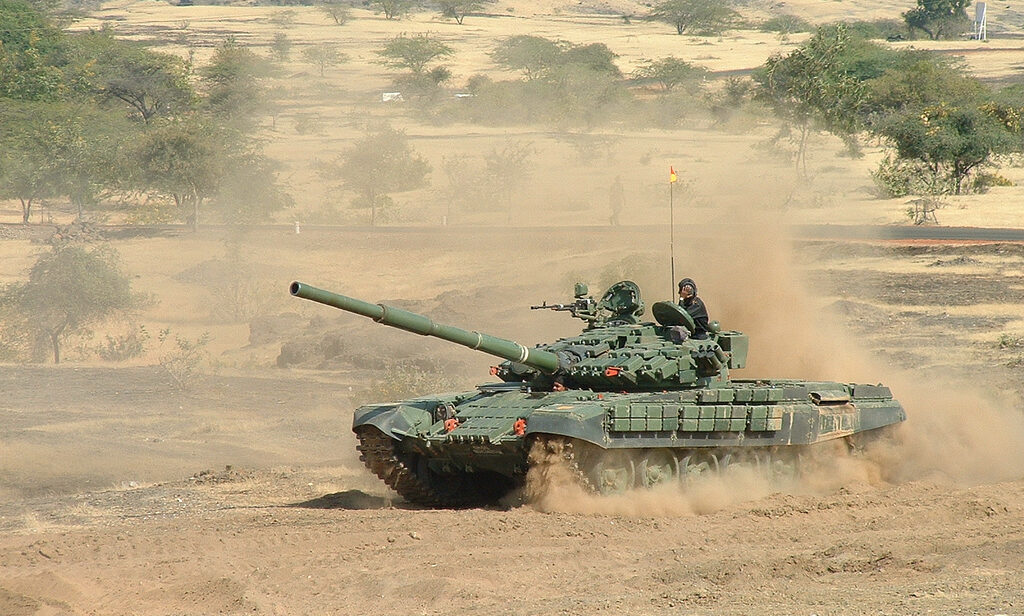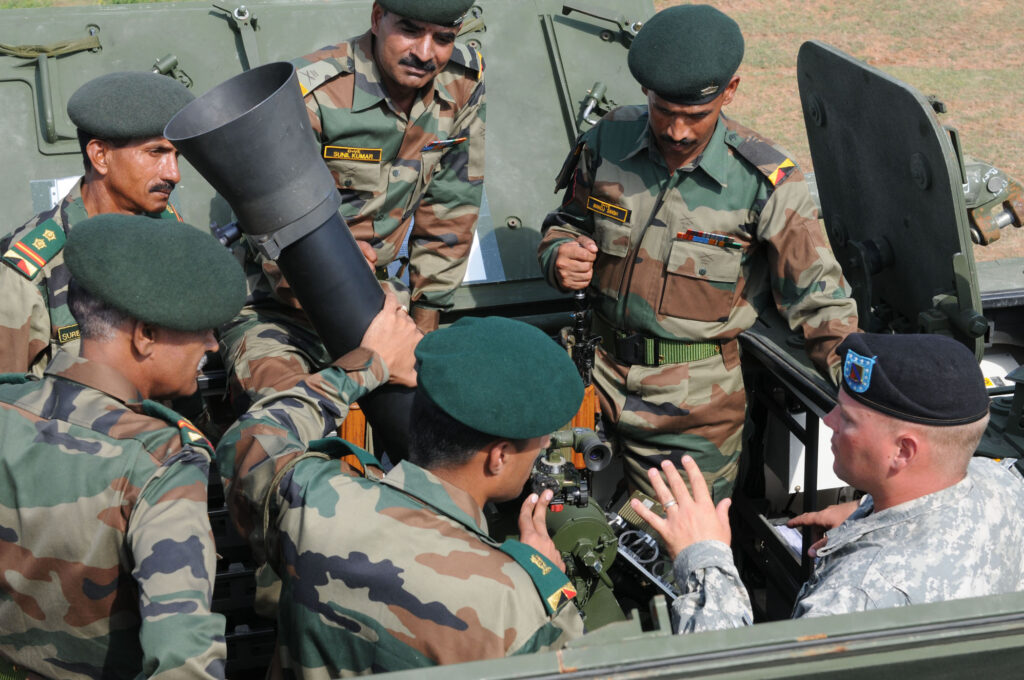
Over the past two terms, the Bharatiya Janata Party (BJP) has created the narrative of being a more muscular, national-security-oriented political party with a strong will to pursue reforms and implement policy decisions. However, as Prime Minister Narendra Modi begins his term in office as part of a National Democratic Alliance coalition government, many of his long-promised reforms in the defense sector remain in stasis. Modi 3.0 will have to address the six key reforms outlined below to ensure that India is capable of dealing with threats to its national security.
Develop a National Security Strategy
While the idea of developing a National Security Strategy (NSS) is not new and has been attempted at least thrice in the past, previous Indian governments have been unsuccessful due to the hesitation to establish political accountability for national security. In Modi’s previous term, the government was vocal about streamlining and transforming India’s national security, and promised to deliver the NSS. However, due to indecisiveness leading to a delay in processes and lack of enough political will, the government could not deliver. The National Security Council Secretariat (NSCS) is collating inputs from various stakeholders and ministries to develop a comprehensive NSS. However, given the Chinese military challenge to India on the continental border and future threats at sea, such a strategy is much needed at the earliest. The lack of such a strategy raises concerns about a missing alignment between national policy and military strategy. As former Indian Army Chief General Manoj Naravane opines, “Defense strategy…has to flow out of a national security strategy.”
Alongside this, policymakers need to develop a revised and robust Joint Doctrine for the armed forces to cater to the needs of the emerging Integrated Theater Commands (ITCs) concept. The ITCs match the threats identified in the NSS with the warfighting roles and functions required for their mitigation. Therefore, the NSS becomes a key step in bridging the national political approach with the military’s operational readiness against adversaries. Sufficient political will and a push from the government are key to make this happen.
Resolve Pending Civil-Military Coordination Issues
While the previous Modi government took certain steps to address the issue of the lack of coordination between civil and military units, much is left to be resolved. In 2019, the government created the Chief of Defense Staff (CDS) post to head the Department of Military Affairs (DMA) in the Ministry of Defense (MoD). The motive was to foster integration and better coordination between the three services of the armed forces and the civil bureaucracy. This was a major transformative step for Higher Defense Organization (HDO) reform.
However, the resolution of civil-military integration through the creation of the DMA is still far from being fully achieved. First, the government needs to clearly define the remit and existing multi-functional role of the CDS. Currently, the CDS is the principal military advisor to the Defense Minister and Military Advisor to the Nuclear Command Authority (NCA) with additional roles as the secretary of the DMA and the permanent Chairman of the Chiefs of Staff Committee. This large scope demands greater clarity in responsibility and priority functions, for greater effectiveness of the CDS. Second, the government needs to create better mechanisms of coordination along with clear SOPs for functioning among the CDS, DMA, and the rest of the MoD. Ad-hocism in the HDO also remains a key challenge, which requires more informed political guidance and intervention.
Implement Integrated Theater Commands (ITCs)
While ITCs may be new, the philosophy of jointness and integration has pre-existed in the Indian armed forces. First mentioned in the Kargil Review Committee Report, Group of Ministers’ Report and the Shekatkar Committee recommendations, it finally materialized in August 2023 as an enabling step in the form of the Inter-Services Organization (Command, Control and Discipline) Bill. ITCs bring better synergy and integration by bringing the three services under a single theater command, making the military much more effective in a crisis situation. This makes ITCs particularly critical in responding to the evolving threat from China through jointness and assemblage of resources for better operational readiness and effectiveness. The theaterization process is part of a larger military modernization goal, including to synchronize and optimize Indian resources and manpower against the perennial China-Pakistan two-front military challenge.
The theaterization process is part of a larger military modernization goal, including to synchronize and optimize Indian resources and manpower against the perennial China-Pakistan two-front military challenge.
But several obstacles have come in the way of successful implementation, including the lack of an NSS and the tussle between armed forces and the bureaucracy in the absence of a strong political direction. Among the armed forces, two key challenges to ITCs remain: first, fostering a culture of jointness, which includes joint response in a contingency, and second, managing service-specific resources since all assets will be under a single command in the theaterization concept. The CDS, with support from the Defense Minister, would have to push the services to manage these critical issues and implement ITCs at the earliest.
Aggressively Push Military Modernization
Military modernization is essential, not only to mitigate the persistent continental military challenge from China on the Line of Actual Control, but also to address threats in the maritime domain. A key structural challenge to modernization is that despite the increase in the defense budget in past years, Indian defense spending relative to the overall GDP remains low. This limits India’s ability to balance available resources for modernization of continental and maritime domain forces. In this regard, the guidance of military acquisition and modernization remains with the political class and remains ad-hoc. For instance, in the post-Galwan crisis environment, the armed forces were given exclusive powers over emergency procurements to fulfill the critical capability voids in operational readiness. While this was a tactical necessity, it reflected a lack of coherence and strategic readiness in the face of a crisis.
Modernization is a long process, but the Modi 3.0 government should ensure that all key stakeholders, particularly the armed forces, their civilian bureaucracy counterparts, and industry are on the same page to achieve this goal. These key stakeholders will have to identify key Indian defense needs based on future threat scenarios and use the resources at their disposal more effectively. These steps will allow them to channel modernization towards achieving military readiness against China in both land and maritime domains.

Revise the Agnipath Scheme
The Agnipath scheme, launched in June 2022, was a bold step toward revisiting the decade-old colonial recruitment scheme in the Indian armed forces. As per the scheme, new soldiers are inducted under a direct recruitment procedure with a training period of 31 weeks and a service period of four years. After this, only 25 percent will continue their service for another 15 years under permanent commission. While the aim of Agnipath was to have a young army and to deal with the large amount spent on pensions cutting into the defense budget, several issues have emerged with the scheme. These include how to retain the experiential knowledge and organizational ethos of recruits that have served for years. Furthermore, there have been concerns around ensuring quality, given the brief training period in the face of operational challenges. Strategically, the Agnipath scheme is a structural plan in the long term to divert the pension money towards capital acquisition in light of the Chinese military challenge. These funds are necessary to modernize the Indian armed forces in the long term. However, it cannot come at the cost of a potentially less capable military.
The government could instead consider extending the service tenure to 8-10 years for newly inducted recruits, as a veteran analyst suggests. This will help them gain better operational training and a sense of the organizational culture, allowing the country to reap the benefits of the Agnipath scheme.
Rigorously Undertake Defense Indigenization
While the Modi government has made some progress on this count in the last few years, it should more rigorously undertake defense indigenization and significantly increase defense exports. The Make in India program has gained significant momentum to develop an indigenous defense industrial base, capabilities, and self-reliance in the defense production sector. The Modi government prioritized domestic procurements to enhance self-reliance, promote defense start-ups and innovation, and reduce import dependence, through initiatives like the Defense Acquisition Procedure 2020, iDEX, and efforts to channel capital expenditure into indigenization through procurement from domestic sources.
As a result, while India is still a net defense importer, its exports are 31 times higher than the previous decade. This transformative shift is likely in response to the Defense Export Promotion Policy Framework, which will be fully realized once private players create more sophisticated and exportable items to sell to developing countries. The government will have to create more such incentives to develop and sustain production and supply chains for mass-level manufacturing.
While the Modi government has made some progress on this count in the last few years, it should more rigorously undertake defense indigenization and significantly increase defense exports.
Conclusion
In past years, India’s announced defense-related policies have been numerous and in some cases transformative. However, for the policies to evolve into true reforms, they must be consistently implemented and sustained. To launch India’s first NSS, Modi 3.0 must show political will. Political guidance is required to overcome the bottlenecks of higher defense organization reform, operational command and recruitment restructuring, and defense modernization. To promote self-reliance and indigenization, the government needs to encourage private defense industry by increasing the R&D allocation to tap into the potential of major import-dependent countries in Asia and Africa to generate new opportunities for defense exports. These plausible pathways, if undertaken by Modi 3.0, are likely to result in a more robust defense policy to support operational readiness and India’s larger national security objectives.
Also Read: From the Mountains to the Seas: India-China Competition in the Wake of Galwan
***
Image 1: Indian Army T-72 via Wikimedia Commons
Image 2: Indian Army Soldiers via Flickr


